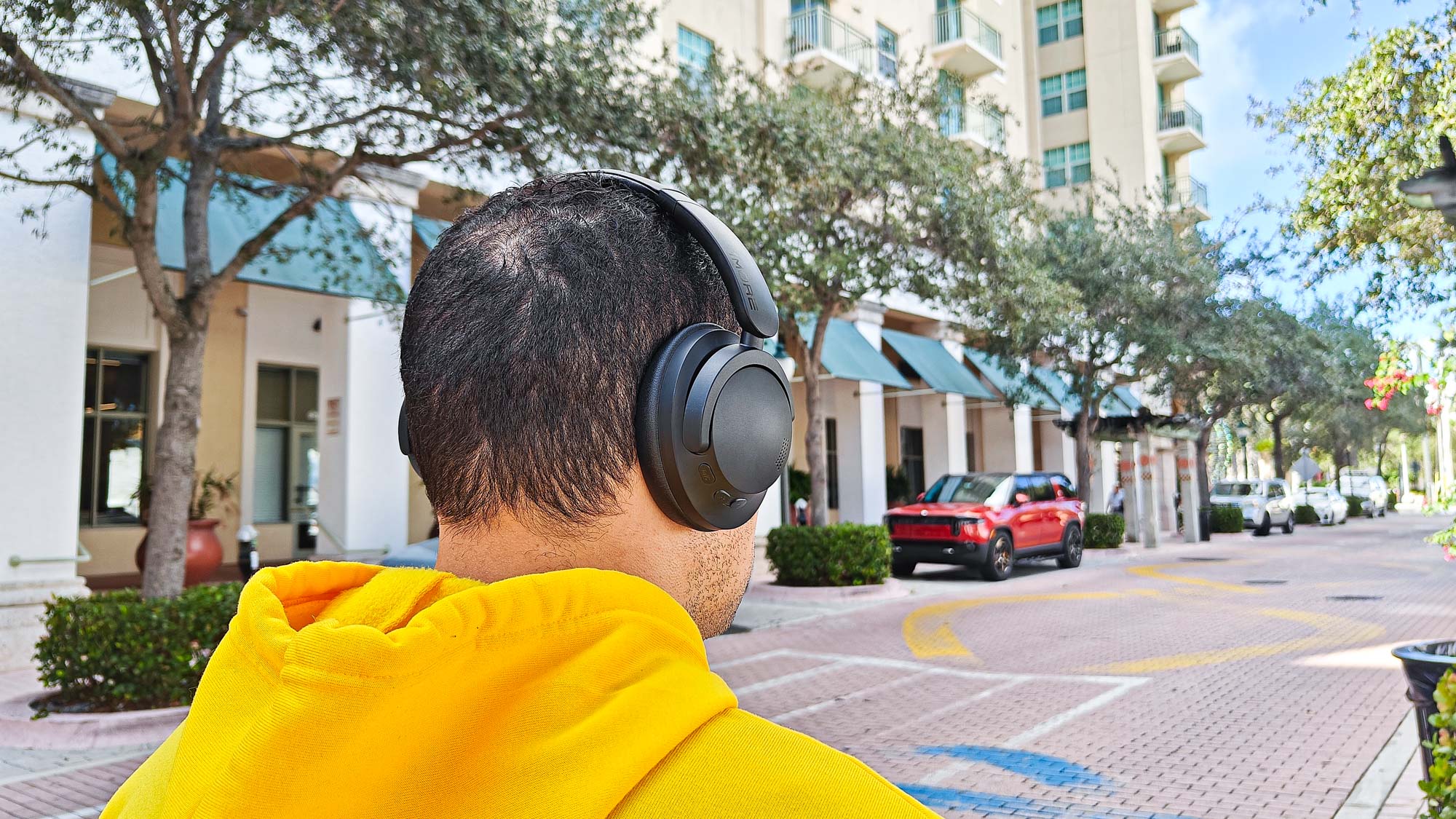I review headphones for a living — here are the 5 tracks I use every time
5 Tom's Guide-tested songs you can use to get the most from your audio gear

Reference tracks are a critical part of the Tom’s Guide testing process, because they give me an unbiased look at the sound profile of the best headphones, Bluetooth speakers, and more.
When I selected these hallowed tracks, it was important to choose ones that showcased the strengths and weaknesses of a device. I asked questions like, "Are they good at picking out detail?" "Do they manage to keep up with the bassline?" and "Do they blend everything together into one great mire of sound?"
To that end, I use a playlist of tracks that I’ve chosen specifically for their particular mix and sound. After all, I can’t just listen to hours upon hours of death metal and say “yup, these are good”. As much as I might want to.
Curious as to what tracks I use when I fire up Qobuz? Here are my 5 go-to songs — and they might surprise you.
Focus, Sylvia
Sylvia is an upbeat track that brings a lot to the table when it comes to testing headphones. It’s very layered, with loads of different instruments to follow, and some headphones get tripped up here, melding everything together into a mire of guitars, bass and drums.
The bass line is an important part of the track, with some wonderful musicality and precision. Gear lacking in that precision can get lost when trying to replicate the line, while the best headphones make sure you can pick out each note amongst the rest of the track.
Then there’s Jan Akkerman’s incredible guitar work — I want to make sure that I can hear every note and that the sustain of his playing is well represented. It’s a lot to handle for even the best speakers, but when it works, it sounds incredible.
Sign up to get the BEST of Tom's Guide direct to your inbox.
Get instant access to breaking news, the hottest reviews, great deals and helpful tips.
George Gershwin, Rhapsody in Blue (Columbia Symphony Orchestra, 1959 recording)

An orchestral arrangement really puts any audio gear through its paces. Can it keep up with the ever-shifting dynamics as the instrumentalists change volume? With sometimes over one hundred musicians playing, it can be hard for less impressive speakers and headphones to keep pace.
The jazzy undertones of Rhapsody in Blue give me a slew of testing opportunities. There’s that wonderful opening Clarinet, for example. It needs to sound smooth, and slowly build in volume. Some headphones don’t capture the same change in volume and intensity, leaving it feeling flat and monotonous.
There are solos aplenty to test the clarity of audio gear, from the aforementioned wind instrument to the piano that later arrives. Then there are the orchestral swells, which showcase soundstage and instrument separation. Can I hear the strings as a mass of sound, or are they clearly separated between the different instruments?
This is a big track that’ll get anyone's foot tapping — and it’s that confluence of all these things that can really make or break a set of cans.
Sylosis, The Blackest Skyline
I’m a metalhead. I exclusively wear band t-shirts, and I’ve got a significant collection of gory album covers that I’m told I’m not allowed to show in front of polite company.
But metal tracks like The Blackest Skyline are still excellent for testing headphones. Why? They've got syncopated distorted guitar riffs that can blend into one cacophonous note in the wrong headphones, and pummeling blast beats that can become completely overshadowed by booming bass even with good headphones.
With this particular track, I want to be able to hear Josh Middleton’s growls and screams cut through the mix, without melding with the cymbals and soaring guitar solos. I need to be able to hear every individual part of the mix, with the bass and guitar discernable on their own.
This is not the most dynamic track, but it can reveal a pair of imprecise headphones quicker than anything else.
Charlotte De Witte, Formula
Trance isn’t something most folks listen to on a daily basis, but it is one of the best ways to test whether or not your gear's putting enough energy in the sub bass.
Formula is not a complex track. It’s 7 minutes of a drum beat, a driving sub-bass line, a synth line, and the occasional rev of an F1 car. But a good pair of headphones brings the bass in a controlled and pulsating manner.
Want to really see what Formula can do? Plug in a subwoofer and crank it. Get those floors shaking to the point that you get a neighborly complaint from three doors down.
Here I want the synthesized cymbals to remain clear and bright over the top of each bass hit, and for the F1 engine to be quick and piercing. Most of all, I want the headphones to make me nod my head, as the track brings the rhythmic energy of a 4 am rave in a dark, sweaty basement.
Want to really see what this track can do? Plug in a subwoofer and crank it. Get those floors shaking to the point you get a neighborly complaint from three doors down.
Chet Baker, It’s Always You (vocal version)
The effortless smoothness of Chet Baker's singing album is as irresistible as it is important to my headphone testing process.
Baker doesn’t have the strongest voice, so any audio gear worth its salt needs to be able to help him cut through the piano line and light double bass. A good pair of headphones makes sure he’s center stage, while a bad pair struggles to place him, well, anywhere.
Similarly, the trumpet line needs to be smooth and precise, with plenty from both the mids and highs bringing both the energy and edge. The cymbals of the drums need to be present too, as they overlap the bass player. That double bass needs to be in the background, but never lost in the mix.
Bad headphones can make it sound like what I’d call “A lump of bass” — some low-end's there, sure, but it’s a kind of muddy puddle that doesn’t have any definition.
In the end, I want to feel like I’m in a smoky jazz club with a glass of whiskey and a French cigarette.
How to choose your own test tracks

Want to find some test tracks of your own? Here's how to do it.
The step is to make sure that you’re familiar with the tracks you choose. You want to be able to recognize the differences in different audio gear, and to do that you need to know them inside and out.
Remember, they don’t have to be tracks you’d traditionally enjoy, and neither do they have to be something that might be considered “audiophile music”. You can critically listen to just about anything!
Step two, and this applies mostly to classical tracks and live recordings, make sure to choose a particular recording if there are several and stick with it.
Last step: have fun. Critical listening can be tedious work, especially when done for hours and hours on end. So pace yourself. Test the same song on a few pairs of headphones or a few pairs of speakers, then stop for awhile to rest.
Headphones should not dictate whether you like a song or not, but they can reveal things about your favorite tracks that you’d not thought about or noticed before.
More from Tom's Guide

Tammy and her generous collection of headphones have found a new home — Tom's Guide! After a two-and-a-half-year stint as iMore's resident audiophile, Tammy's reviews and buying guide expertise have more focus than ever on Tom's Guide, helping buyers find the audio gear that works best for them. Tammy has worked with some of the most desirable audio brands on the planet in her time writing about headphones, speakers, and more, bringing a consumer focussed approach to critique and buying advice. Away from her desk, you'll probably find her in the countryside writing (extremely bad) poetry, or putting her screenwriting Masters to good use creating screenplays that'll never see the light of day.
You must confirm your public display name before commenting
Please logout and then login again, you will then be prompted to enter your display name.

![Charlotte de Witte - Formula (Original Mix) [KNTXT010] - YouTube](https://img.youtube.com/vi/XwX9w00dZcY/maxresdefault.jpg)

